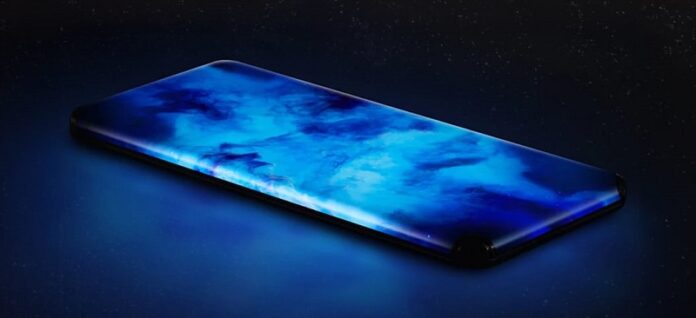Curved-display phones have a stylish design with comfortable handling. The screen bends a little so it fits well in your hand. These phones help you see pictures and videos better because the screen is big and clear. They use special quad-curved display technology that makes the screen bend on all sides. This technology helps the phone work fast when you touch it, so games and apps run smoothly. The phone also uses smart computer help to make things easy and fun to use every day for everyone.
Why Curved Display Phones Captivate Tech Enthusiasts Today?
I’ve looked at new mobile display technology. Curved display phones look impressive and feel comfortable to use. I see the sweeping edge as more than just style because it gives more usable screen space without making the phone wider. The slim bezel is a key feature in flagship smartphones. Many gamers love curved display phones for their wide and immersive view.
The curved design also helps reduce accidental touches and slightly changes thumb reach. I believe these comfort benefits are a big reason why they are popular in gaming phones and luxury models.
What Unique Visual Effects Define Quad-Curved Display Tech?
I researched quad-curved display technology. All four edges curve smoothly into a seamless wraparound screen. I noticed how light reflections bend in an elegant way. User feedback shows gestures move easily over the edges. This design gives a cinematic feel. The light near the curves adds depth that flat screens do not have.
How Does Curved Display Integrate with AI-Powered Experiences?
I explored how AI works in curved phones. AI changes the screen’s color temperature as the light around you changes, especially near the curved edges. I have seen models where AI learns how you use the phone, and edge alerts show notifications based on the situation. Some gaming phones use AI to know how you hold the phone. It changes the touch sensitivity on the curved sides so you can play better and not make mistakes. This combines curved displays with smart features.
Real-World Advantages of Curved Screen Design
I’ve explored the latest curved-screen designs by looking at real user feedback and recent phone releases. Curved display phones are now more than just good-looking. They bring real benefits in comfort, screen visibility, battery life, privacy, and easy edge controls. In my view, each benefit combines the latest mobile display technology with useful everyday improvements.
Immersive Visual Depth
Curved display mobiles wrap visuals around the sides of the screen. This curve makes games and videos feel more engaging. As the screen edges sweep toward me, my peripheral vision gets involved. I see more, feel more, and enjoy more. This is especially true in gaming smartphones and flagship smartphones, where visual immersion matters most.
Enhanced Ergonomic Comfort
Curved glass fits my palm better than flat screens. This natural fit means I adjust my grip less and feel less wrist strain over time. Long typing or reading sessions feel more comfortable. This ergonomic benefit is especially helpful in larger phones, keeping usage fatigue low.
Reduced Glare and Battery Efficiency
Curved screens block ambient light more effectively than flat displays. Outdoor brightness feels softer, and I can lower the screen brightness in bright conditions. This helps save power and allows longer use without worrying about the battery.
Expanded Field of View
I also notice the content looks slightly “larger” along the curved edges. This makes the usable display area bigger without increasing the phone’s width. It gives me more visibility for multitasking while keeping the phone comfortable to hold.
Improved Privacy
The curve slightly narrows the side viewing angles. This makes the display harder for others to see from the side. It works as a handy privacy feature when checking messages in public without turning on privacy mode.
Elevated Edge Features
Curved edges are more than just a stylish design. They allow smart features like swiping the edge for quick access or using edge lighting for notifications. In some gaming smartphones, the edges work as virtual buttons, adding extra functions without cluttering the screen.
Subtler Weight & Width Profile
A curved screen often lets manufacturers reduce bezel size and phone width while keeping the display large. Phones feel sleeker and lighter, and I can reach more of the screen with my thumbs. This makes one-hand use easier, even on large flagship smartphones.
Durability Trade-off Observations
Modern designs and materials have made curved screens more durable. For example, the Motorola Edge 60 series uses curved pOLED with Gorilla Glass protection, which resists impacts and passes rugged tests. Phones like the Vivo T4 Ultra now offer 5,000-nit curved AMOLED panels with IP69 water resistance and strong build quality.
Curved vs. Flat Display Pros
| Features | Curved Display Phones | Flat Display Phones |
| Immersion | The wraparound effect enhances visual. | Standard flat viewing. |
| Usable Surface | Edges let more screens in the same width. | Stays rigid at corners. |
| Hand comfort | Smoother grip contours. | Less ergonomic curve. |
| Edge Gestures | Custom triggers inside the border. | Requires on-screen controls. |
| Lightweight Feel | Slim bezel, lighter profile. | Uniform thickness. |
Which Smartphones Exemplify Curved Display Innovation?
I keep an eye on the global smartphone market to find the best examples of curved-display innovation. In 2025, these smartphones are changing the way we see design and smart features. Each model blends modern curves with practical use, from flagship smartphones to gaming smartphones.
Below, I list models that look futuristic and feature quad-curved displays, immersive screens, and AI-powered features.
OnePlus 13 (Quad-Curved Glass Mastery)
- The OnePlus 13 wields a 6.82-inch Quad HD+ LTPO AMOLED screen with a 120 Hz refresh and 510 PPI, curving elegantly across all edges.
- Driven by Snapdragon 8 Elite, configurations reach up to 24 GB RAM and 1 TB storage, with robust 6,000 mAh battery and 100 W wired / 50 W wireless charging.
- The curved display enhances media immersion and gesture control—key for gaming smartphones and flagship models alike.
OnePlus 13 Pro (Sleek Curved Experience)
- This refinement of its predecessor features a 6.78-inch LTPO AMOLED curved display at 120 Hz.
- Alongside minimalist edges, it delivers flagship-grade power and is ideal for users seeking premium mobile display technology and subtle visual elegance.
Xiaomi 15 Ultra (Quad-Curved Flagship Spectacle)
- Leads the pack with a 6.73-inch WQHD+ quad-curved LTPO AMOLED, delivering vivid colors and a smooth 120 Hz refresh rate.
- Powered by Snapdragon 8 Gen 2, paired with Leica-tuned camera system and fast charging (90 W wired, 80 W wireless) and melding design flair with substance.
iQOO 13 5G (Performance and Curved Brilliance)
- Boasts a 6.82-inch curved LTPO AMOLED display at blazing 144 Hz refresh.
- The phone has a Snapdragon 8 Elite chip inside.
- It can have up to 16 GB of RAM, a big 6000 mAh battery, and fast charging of 120 W.
- This phone is great for gamers and is one of the best gaming phones.
Motorola Edge 60 Pro & Edge 50 Pro (Durable Elegance)
- Edge 60 Pro: Equipped with a 6.7-inch curved pOLED, 120 Hz, HDR10+, 4,500 nits brightness, and Gorilla Glass 7i for resilience
- Edge 50 Pro: Features 6.7-inch curved pOLED panel with Pantone-calibrated colors, 144 Hz refresh, and fast 125 W charging
- Both deliver vibrant visuals, longevity, and speed: perfect for curved-display mobiles with real-world stamina.
Honor Magic 6 Pro (Commanding Quad-Curved Aesthetics)
- Flaunts a 6.8-inch quad-curved OLED screen with full-edge wraparound curves. Powered by Snapdragon 8 Gen 3 and a 180 MP main sensor for high-end capture capabilities.
Huawei Pura 70 Ultra (Stylish, Edge-to-Edge Craftsmanship)
- Delivers quad-curved OLED screens across Pro and Ultra variants, 1 Hz – 120 Hz LTPO refresh, 300 Hz touch sampling, and advanced high-frequency dimming.
- Blends curvature with responsive AI-enabled screens, raising the bar in luxury curved display phones.
Oppo Find X7 Ultra (Visual Immersion Redefined)
- Offers a quad-curved AMOLED display that feels waterfall-like, paired with a premium design and strong camera prowess.
Vivo T4 Ultra (AI-Infused Curved Display)
- Launched June 2025 in India, the Vivo T4 Ultra sports a 6.67-inch curved AMOLED at 120 Hz and 5,000 nits peak brightness.
- Features MediaTek Dimensity 9300+ chip, triple-camera including 100x zoom, and AI perks like AI Eraser 2.0 and Call Translation and demonstrating how curved display mobiles converge with AI functionality.
How Curved Displays Shape Future Trends?
I’ve closely followed the growth of mobile display technology, and curved displays are now close to changing how we use devices. Today, phones are not just for calling. They are smart with cool features like games and AI. The curved design of phones is not just to look nice; it also helps in other ways. It’s a clear move toward next-gen devices that are responsive, immersive, and smart. This section looks at how curved display phones link with new trends and what the future might bring.
Rollables and Expandables: The Next Frontier
I look at how curved display mobiles are moving toward rollable designs. Flexible OLED now makes it possible for screens to stretch into larger sizes without using hinges. For example, Tecno’s Phantom Ultimate grows from 6.55 inches to 7.11 inches in just 1.3 seconds. These screens keep the benefits of curved edges while offering much more display space.
This shows how gaming phones and small devices can give a more immersive experience without losing portability. As manufacturing improves, rollable phones might become more useful and flexible than traditional curved models.
Flexible, Durable Displays and Sustainability
I have looked into how OLED and new materials help make screens last longer and reduce harm to the environment. Flexible screen bases handle damage better than hard glass, which cuts down costs and waste over time.
Phones with curved screens made from eco-friendly materials meet the growing need for green technology. These screens improve comfort and use less energy, fitting well with sustainability goals and the durability people expect worldwide.
Apple’s Curved-Display Vision
The flexible and curved display markets are expected to grow very fast, especially in consumer electronics and cars.
Interestingly, Apple plans to launch a curved-glass iPhone in 2027 with no cutouts. It might have cameras hidden under the screen and wraparound touch features. This design follows Apple’s goal of having screens curved on all sides, but with better durability, stronger integration, and smart AI features.
Final Thoughts
I confirm that curved display phones are not just for looks. They offer comfortable handling, better visuals, and smart AI features that make them personal. These phones show the latest in mobile screen technology. Whether for top smartphones or gaming phones, they improve how you experience and use your device every day. As quad-curved screens get better, they will work with smart AI that knows the screen edges. This will make phones smarter and easier to use.








